Hydroponics, or plants growing in the root medium of the nutrient solution, is a growing area of commercial food production and is also used for home food production with hobbyists. Learn the latest techniques for preparing food in a controlled, soil-free environment. Today, more than 2,300 farms growing hydroponic crops in the United States make up only a fraction of the country’s $5.2 billion fruit and vegetable market.
Hydroponics refers to agricultural systems that provide nutritious water to plant roots instead of soil and regular water. Since plants do not need to look for nutrients, they can expend more energy growing strong and healthy. Plants can also grow close to each other in hydroponic systems because their roots do not spread. As a result, hydroponic systems are appreciated for producing stronger crops and higher yields in smaller areas. Let’s check out more information about Hydroponic farming in USA below.
Benefits of Hydroponic farming
- Hydroponic farming is very profitable. It is an example of high yield in just a small space in any weather or climatic conditions. Hydroponic vegetables are accurate and balanced in fiber, minerals, and vitamins.
- The first way to irrigate less: Hydroponic systems use less water – 10 times less water than conventional field irrigation methods because the hydroponic system catches water instead of allowing it to drain into the environment.
- Growing locally: Indoor hydroponic systems allow plants to grow almost anywhere throughout the year.
- Less space: Hydroponics come in different designs that include vertical stacking systems that take up little space. Countries with very short or less agricultural land can also practice hydroponic farming at home.
- Food Safety: According to US Department of Agriculture requirements, growing food for human consumption needs proper handling, storage, and labeling.
- Disease: Hydroponic growing plants are not immune to disease. Most systems are closed (i.e., water circulates); bacteria or microorganisms that enter the water source can infect every plant in the hydroponic system.
- Energy Usage: Depending on the geographical location, indoor hydroponic gardens may require artificial lighting, increasing the energy needed to run the discounted operation. In addition, most hydroponic systems require an electronic pump to pump water to plants.
- Seed dispersal: In a national park layout, seed dispersal for outdoor hydroponic systems should be considered. The wind or the animals can spread the seeds of plants to other national park areas.
In case you missed it: Hydroponic Farming in Bangalore: How to Start, Setup Cost, Companies, and Suppliers
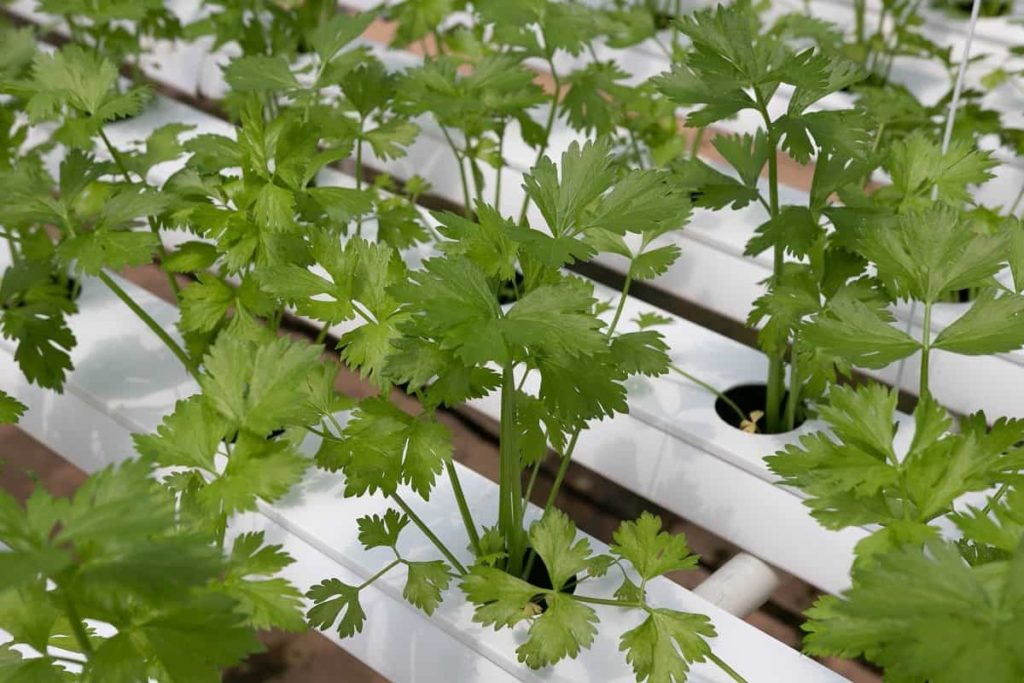
Crops suitable for Hydroponic farming in USA
Hydroponically grown plants grow 50% faster and produce higher quality vegetables, fruits, herbs, and flowers. In addition, hydroponic cultivation eliminates the need for soil, eliminates soil-borne diseases and pests and weeds, and uses herbicides and insecticides, while ten times more vegetables than conventional farming.
Hydroponic systems also reduce water loss and the number of natural resources needed to grow, allowing complete control over the climate, nutrients, and growing conditions. The hydroponics market developed from limited land and other resources with higher yields than conventional farming methods, profoundly affecting the demand for hydroponics. Hydroponic systems combine several technologies and surround a specific set of system models.
Almost any plant can be grown in hydroponics; the most common are Lettuce, Tomato, Pepper, Cucumber, Strawberry, Watercress, Celery, and some herbs. An important factor in designing a system for a particular crop is how it is assisted in its nutritional solution.
Largest hydroponic container farm in the USA
Vertical Roots is the largest hydroponic container farm in the United States that uses advanced technology to grow Lettuce sustainably in globally certified food-safe vertical farms, all year round, providing fresh, tasty, local produce. Vertical Roots Farm hydroponics done through:
- Maximizing crop use
- Donating safe food to local charities and supplementing food production to local animal farms,
- Composting with community partners
- Educating your customers about food loss and waste.
Why Hydroponics?
Humans are now confronted with several new demanding issues causing dramatic changes in our global lifestyles: climate change, increasing urbanization, hazardous infectious diseases, and depletion of natural resources. Hydroponic farming has the potential to reduce the risks to our agricultural systems. The biggest benefit of hydroponic farming is growing crops in the closest conditions using controlled environment agriculture (CEA) technology.
Crops grown indoors hydroponically can be grown anywhere on the land at any time of the year, regardless of climatic conditions, availability of arable land, or soil quality. Indoor farms use hydroponics frequently because no soil is required and plenty of artificial light is available; it is unnecessary to grow outside. Famous indoor farms that often use hydroponic systems include vertical farms, container farms, and greenhouses.
In case you missed it: Earning Up to 3 Crores Per Year from Soilless Farming: A Success Story of a Hydroponic Farmer in India
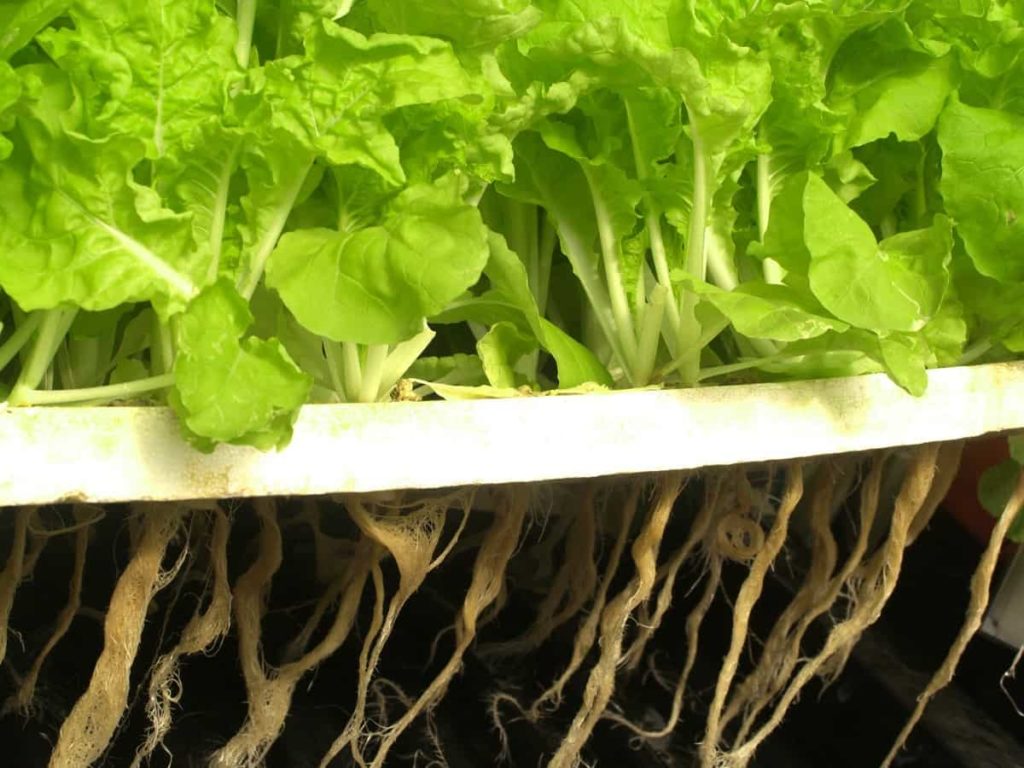
It is the process of growing plants without soil, where the soil is replaced with a mineral solution poured around the roots of the plants. In addition, the roots of the plants are submerged under a chemical solution and tested periodically to ensure that the proper chemical structure for growth is maintained. Thus, the hydroponics method eliminates the risk of diseases caused by soil organisms. Furthermore, hydroponically grown plants produce more than similar plants grown in the soil due to proper control over nutrients.
It has the potential to provide fresh food for areas with extreme drought and low soil quality. In addition, crop production in a controlled environment enables advanced climate control technology to improve the input of nutrients and light supplied to plants. For example, sensors can measure the amount of water and nutrients each plant transports.
It provides farmers with insights into the amount of unused plant water and nutrients at each stage of the growth process. With this, farmers can ensure maximum yield and the highest quality by improving plants’ time, quality, and input quantity. In addition, this technology helps CEA farmers reduce water loss faster with design features such as accurate irrigation methods.
The hydroponic system uses up to 90% less water than conventional farms. Light inputs have also been improved to ensure maximum absorption and yield of plants. Photosynthetic active radiation, or PAR, measures the amount of usable light (photons) supplied to different plants. Then, the range between 400 and 600 nanometers represents the usable wavelength of light energy for plants, although scientists have found that absorption peaks are often at 440nm (blue light) and 660nm (red light).
Suppose the transmission of these optimal wavelengths of light is targeted. The amount of energy supplied to plants can be improved by excluding wavelengths of light that plants would not absorb due to the purple light that often shines on plants in hydroponic forms. The logic behind the color of greenhouses is the same: green glass ensures that the green light does not reach the plants, so they only get the colors that they absorb easily. Since LED lights consume a lot of energy, absorbing the maximum amount of light supplied to the plants helps limit the energy lost.
Growing media in Hydroponics
Standard growing media include vermiculite, perlite, coconut coir, stone wool/stone wool, clay pellets, sand/gravel/sawdust, and peat moss. The hydroponics system removes barriers between the plant and its nutrients. Barriers provide the roots with direct access to the water, oxygen, and nutrients they need to grow and survive. The risk of exposure to plant diseases or external factors is also low.
In case you missed it: Top Hydroponics Companies in India
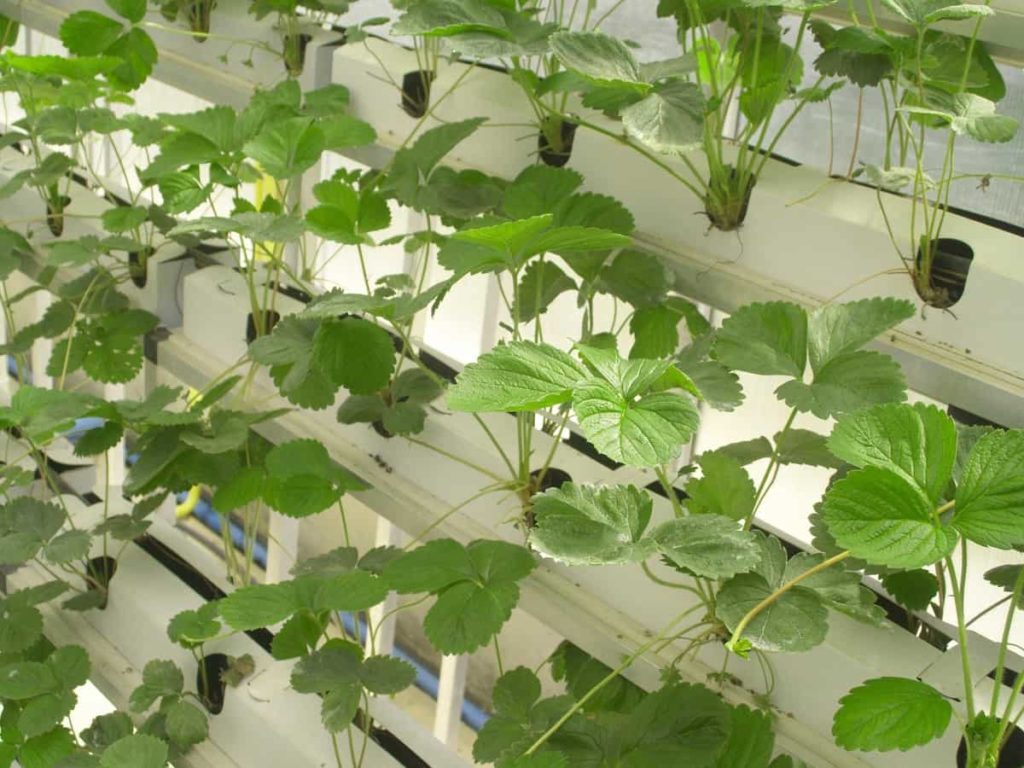
Key Hydroponic companies in the USA
Some of the major players in the hydroponic industry include AeroFarms (US), Illumitex, Inc. (US), and American Hydroponics (US). These players include strategies such as partnerships, business expansion, new product development, and contracts to increase their market share. Companies are focusing on expanding hydroponic farms to meet the closing market requirements. Some of the main players in the global hydroponics market are;
- AeroFarms
- AmHydro
- Argus Control Systems Ltd.
- Emirates Hydroponics Farms
- Freight Farms
- Green Sense Farms Holdings, Inc.
- Heliospectra AB
- LumiGrow
- Signify Holding
- Terra Tech Corporation
Vertical Hydroponic farming in the USA
Vertical hydroponic farming has great potential in large-scale urban centers:
- Sustainably providing adequate food to feed all mankind for the foreseeable future comfortably;
- Allow large portions of land that restore ecosystem functions and services to return to the natural landscape;
- Use the organic component of human and agricultural waste safely and efficiently to generate energy through methane production and significantly reduce insect populations (e.g., rats, cockroaches).
- Blackwater reform to develop a necessary new strategy for drinking water conservation;
- Take benefit of abandoned and unused urban areas;
- Breaking the transmission cycle of disease agents associated with an intestinal contaminated environment;
- Allowing year-round food production without reducing production due to climate change or weather-related events;
- Eliminate the need for widespread use of pesticides and herbicides.
- Provides an essential new role for agrochemical industries (i.e., designing and preparing safe, chemically prescribed foods for a wide variety of commercially viable plants;
- Creating an environment that is sustainable for citizens. Encourages life, promotes good health – all those who choose to live in cities.
The vertical farming technique offers a high-speed supply chain and seeding ordering system with eight weeks turnaround time for seedling production. These systems will help farmers meet the growing demand and offer promotions and special offers to consumers in the US market. In addition, increasing focus on plug development and reducing plant shrinkage will encourage companies to introduce advanced technology to the market.
In case you missed it: Growing Herbs Hydroponically – Farming Practices
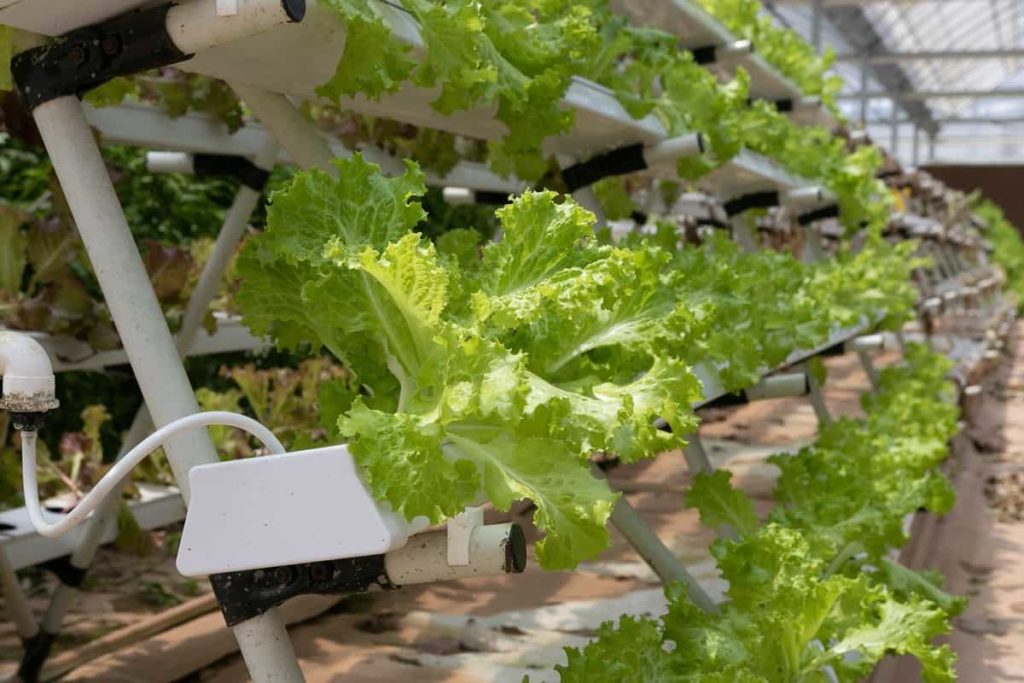
The US vertical farming market is moving towards a more sustainable model than the agricultural movement. Layout optimization will enable reasonable optimization and the highest labor efficiency in the US market. The Market Research Report provides an in-depth and concise analysis of the US vertical farming market through development systems, ecology, and technology.
The design of vertical farms allows farmers to change plant layouts to maximize space use and improve ground space. Because vertical farms extend upwards rather than outward on a horizontal plane, farmers can grow about 3 to 10 times more plants in the same space as conventional farms, depending on the specific layout. In addition, ground space can be multiplied by placing horizontal racks on top of each other.
The same modular design offers a quick and easy way to isolate diseased or dying crops that can neutralize compromised plants. It is more challenging to identify diseased crops and disconnect them from other crops in the field on a conventional farm that can cover several square miles. Modular farming enables more efficient development, where plant transfers and packaging to other crops can be completed without interruption.
Lastly, with the help of low soil growth, this modular design allows the development space to remain in permanent use. After the next crop rotation, there is no waiting period before replanting the next crop. With the help of a continuous nutrient series and light inputs that significantly reduce crop rotation, this farming model can mainly result in 7 to 14 times more growth cycles than traditional methods.
Vertical farms can be built with urban centers, so Lettuce, for example, does not have to sit in a truck for several days as it makes its way from California to the east coast, losing both quality and nutrition. In addition, vegetables can be raised for flavor rather than storage and production.
DWC Hydroponics in the USA
Deepwater culture works by suspending plant roots in a pool of nutrient-rich, oxygenated water solutions. Use an air pump with an airstone to replenish the solution with oxygen. The advantages of DWC are few moving parts, namely simple assembly and minimal maintenance, and time to grow faster than growing in soil. For DWC, you will need;
- A reservoir or container to hold the nutrient solution
- An air pump is like an aquarium
- An airstone – is used to inflate a nutrient solution to form bubbles.
- A hose or airline connecting a pump and an air stone.
- A vessel filled with the medium of your choice to keep the plant in a nutrient solution.
In case you missed it: Growing Vegetables Hydroponically – Nutrients, pH
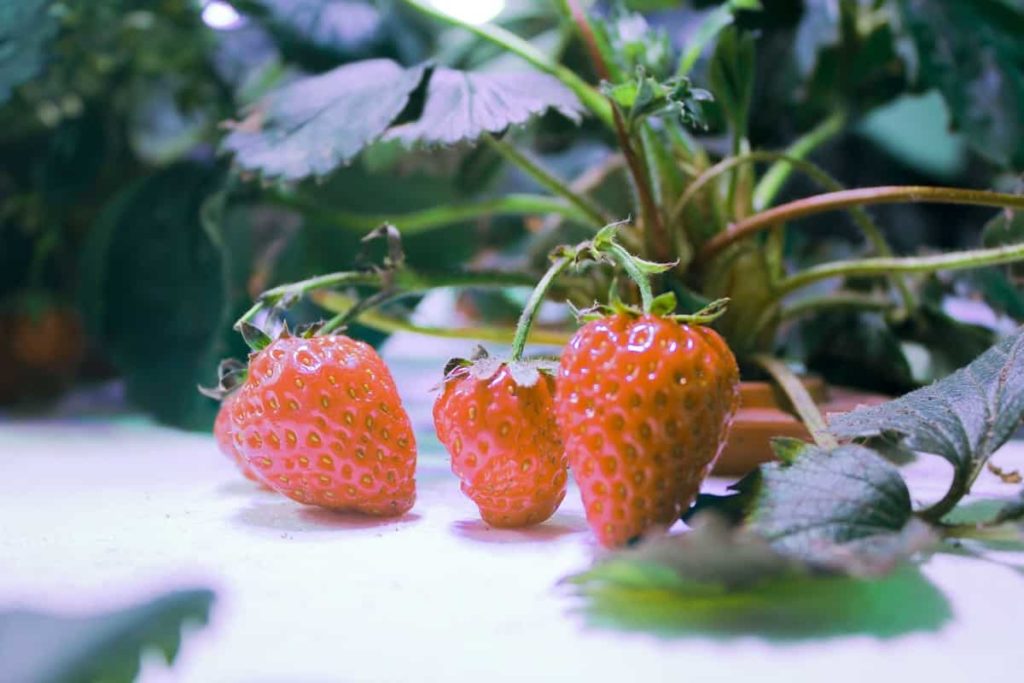
Three things are essential for a water culture system: oxygen, water, and nutrients. In addition to water, nutrients are pumped into the air, giving the roots plenty of oxygen when immersed in the solution. The larger the reservoir, the more stable the nutrient solution will be, resulting in smaller fluctuations in pH, temperature, water level, and nutrients. Adequate levels ensure that your plants get the nutrients they need from the nutrient solution.
Vertical farming market in the United States
The growing need for sustainable agricultural practices that minimize adverse effects on the environment will drive the vertical farming market growth in the United States. The exponential levels of environmental pollution, with a significant impact on land resources, will further the need for sustainable agricultural systems in the USA. In addition, factories in the supply chain exacerbate the impact of the downturn and adversely affect the harvesting, processing, and transportation processes in the market.
The vertical farming implementation will reprocess inputs and use fewer resources, thus maximizing the sustainability of the vertical farming market in the USA. Introducing harvesting robots, automatic seeders, and greenhouse roof washers to reduce operating costs and increase revenue in the vertical farming market in the United States. Automated plant movements include grafting, seeding, packaging, harvesting, and cleaning unit operations that are gaining traction in the US market.
The growing popularity of kitchen gardens, fueling the concept of onsite farming, is driving the vertical farming market growth in the USA. Kitchen gardens are being set up everywhere, from lush countryside resorts to gastro pubs to market community initiatives. A hydroponics system enables the long-term cultivation of a wide range of crops in the market.
Recent advances in hydroponics have facilitated the development of this segment in the US market by facilitating technology and economics to cater to comfortable indoor farmers. In terms of technology, the US vertical farming market is divided into lighting devices, software, components of growth methods, climate control, and sensing devices.
States that have the largest turnover in the hydroponic crop farming industry in the United States
- Pennsylvania (689 businesses)
- New York (601 businesses)
- Michigan (494 businesses)
Tips For Success in Hydroponic Farming
Research before you grow – Each plant you choose to grow with hydroponics will be different from the next. Even a consignment of tomatoes may behave differently from the next batch. Before growing, research each crop and find out its pH, temperature, nutrition, and light preferences. It is for any farmer – even the most experienced gardener. Once you know the ideal environment for your favorite crops, you can begin to imagine which crops you would keep close to each other and which crops you could not grow in one place at the same time.
Learn about the different diseases that can affect your crops as you research. You can easily overcome nutritional deficiencies with additional supplements in your fertilizer, but some diseases can be challenging to cure. Generally, you will need to remove the diseased plant entirely and thoroughly clean the growing medium and its container. Knowing the most devastating diseases before they develop can help you avoid them and take notice of them promptly.
Set a schedule – A regular plant care schedule will help you ensure your plants grow properly. Hang a whiteboard where you can see daily, weekly, and monthly hydroponic mounting tasks. Also, you may want to leave space for any notes, such as plant growth progression or nutrition warning signs.
Keeping your schedule organized can help if you ever need someone else to take care of the garden while you are away. Stay active with your schedule and task list, and your garden will reward you for your hard work with a full crop of beautiful crops.
Keep your system clean – Regular maintenance of your hydroponic system is essential for a healthy crop. You need to ensure that the dirt and algae do not get on your plants and become infected. After each harvest, take the time to clean up your system for a complete refresh during the next cycle. If a plant is sick or infected with fungus, clean the area around it immediately and change the water.
In case you missed it: Common Mistakes Made in Hydroponic Farming: Things to Avoid for Beginners
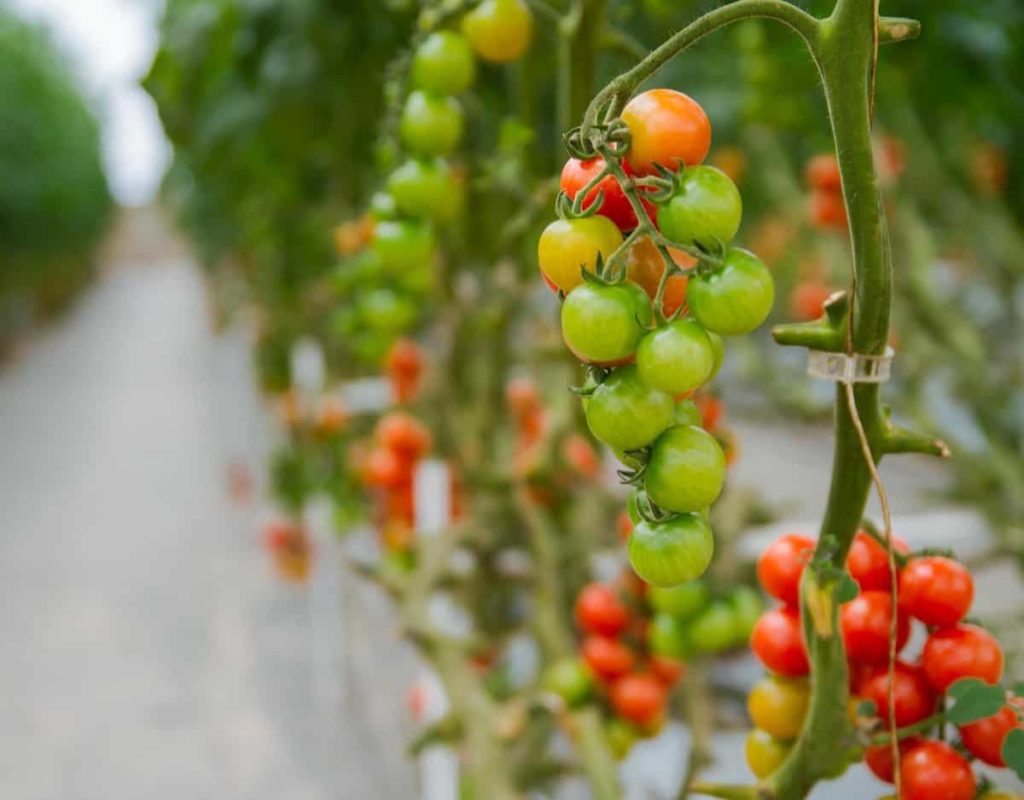
Start small, and be patient – One of the best parts of hydroponic gardening is how fast the crops grow compared to the outdoor garden. However, just because your plants grow fast does not mean that you will learn quickly. Start small and learn ropes with single hydroponic containers before flowering in a beautiful hydroponic garden. Your hydroponic gardening skills will naturally develop over time as you practice and research.
Important nutrients for Hydroponic farming plant growth
Nitrogen (N) – Most plants often need nitrogen. It is essential for the production of chlorophyll (the green color in plants responsible for light synthesis) and the synthesis of proteins. Nitrogen deficiency causes plants to grow yellow or yellow leaves and stunted growth.
Phosphorus (P) – Phosphorus rarely plays an important role in plant growth but is fundamental to crop growth. It is an essential component of adenosine triphosphate, which provides energy for many processes in plants. Therefore, a lack of phosphorus can result in reduced yields.
Potassium (K) – Potassium is required by almost all crops, often at higher rates than nitrogen. It regulates the water content and spread of the plant.
NFT Hydroponic farming in the USA
NFT. The system (nutrient film technique) is also very popular among domestic hydroponic growers. Mainly because of its relatively simple design. However, the NFT is best suited for systems and is commonly used to grow small, fast-growing plants, such as Lettuce. Along with growing Lettuce, some commercial growers also grow various herbs, and baby greens using NFT System Nutrient Film Technique (NFT) provides a thin film of nutrients to plant roots.
Water and nutrient solutions are held in a large reservoir with an air pump and airstone to hold oxygen (such as the DWC system). However, unlike the sunken roots of DWC, NFT-system plants are grown in nearby channels (in lattice pots). Attached to a timer, a water pump pushes water through a channel. It provides the plants with a thin film of nutrients and water, where the roots are not entirely submerged. At the end of the channel, the solution falls back into the main reservoir, which will be reused in the system.
Advantages: NFT is a low waste recycling system. The film ensures that you avoid suffocating your roots. In addition, there is minimal to no growing media required in NFT.
USA’s first saltwater Hydroponic farm in Charleston, SC
How does saltwater Hydroponics work?
The main step in this process is to study common hydroponic farming. Simply put, this method of indoor farming eliminates the use of soil by using alternative root anchors for plants and growing them directly in water (think: “hydro” = water). Internal layout eliminates land-use barriers and seasonal barriers to crops. Plants get controlled amounts of water, oxygen, nutrients, and light to promote the growth cycle.
Why salt water?
In addition to the reasons given above, seawater micronutrients transmitted to plants are a major source of minerals in our daily diet. In addition, it allows seawater irrigation companies to use less freshwater than any other farm in the United States.
Conclusion
If you live in the states of the USA and plan for Soilless farming or Hydroponic farming, the above content may be useful in setting up your Hydroponic farm.
| Alabama | Iowa | Nebraska | Rhode Island |
| Arizona | Kansas | Nevada | South Carolina |
| Arkansas | Kentucky | New Hampshire | South Dakota |
| California | Louisiana | New Jersey | Tennessee |
| Colorado | Maine | New Mexico | Texas |
| Connecticut | Maryland | New York | Utah |
| Delaware | Massachusetts | North Carolina | Vermont |
| Florida | Michigan | North Dakota | Virginia |
| Georgia | Minnesota | Ohio | Washington |
| Idaho | Mississippi | Oklahoma | West Virginia |
| Illinois | Missouri | Oregon | Wisconsin |
| Indiana | Montana | Pennsylvania | Wyoming |
- How to Make Houseplants Bushy: Effective Tips and Ideas
- Innovative Strategies for Boosting Coconut Pollination and Yield
- Pollination Strategies for Maximum Pumpkin Yield
- The Complete Guide to Chicken Fattening: Strategies for Maximum Growth
- Natural Solutions for Tulip Problems: 100% Effective Remedies for Leaf and Bulb-Related Issues
- Revolutionizing Citrus Preservation: Towards a Healthier, Greener Future
- Natural Solutions for Peony Leaf and Flower Problems: 100% Effective Remedies
- Maximizing Profits with Avocado Contract Farming in India: A Comprehensive Guide
- Natural Solutions for Hydrangea Problems: 100% Effective Remedies for Leaf and Flowers
- The Ultimate Guide to Choosing the Perfect Foliage Friend: Bringing Life Indoors
- From Sunlight to Sustainability: 15 Ways to Use Solar Technology in Agriculture
- The Ultimate Guide to Dong Tao Chicken: Exploring from History to Raising
- The Eco-Friendly Makeover: How to Convert Your Unused Swimming Pool into a Fish Pond
- Mastering the Art of Delaware Chicken Farming: Essentials for Healthy Backyard Flocks
- 20 Best Homemade Fertilizers for Money Plant: DIY Recipes and Application Methods
- How to Craft a Comprehensive Free-Range Chicken Farming Business Plan
- Brighten Your Flock: Raising Easter Egger Chickens for Beauty and Bounty
- How to Optimize Your Poultry Egg Farm Business Plan with These Strategies
- Subsidy for Spirulina Cultivation: How Indian Government Schemes Encouraging Spirulina Farmers
- Ultimate Guide to Raising Dominique Chickens: Breeding, Feeding, Egg-Production, and Care
- Mastering the Art of Raising Jersey Giant Chickens: Care, Feeding, and More
- Ultimate Guide to Raising Legbar Chickens: Breeding, Farming Practices, Diet, Egg-Production
- How to Raise Welsummer Chickens: A Comprehensive Guide for Beginners
- How to Protect Indoor Plants in Winter: A Comprehensive Guide
- Ultimate Guide to Grow Bag Gardening: Tips, Tricks, and Planting Ideas for Urban Gardeners
- Guide to Lotus Cultivation: How to Propagate, Plant, Grow, Care, Cost, and Profit
- Agriculture Drone Subsidy Scheme: Government Kisan Subsidy, License, and How to Apply Online
- Ultimate Guide to Raising Araucana Chickens: Breed Profile, Farming Economics, Diet, and Care
- Bringing Hydroponics to Classroom: Importance, Benefits of Learning for School Students
- Ultimate Guide to Raising Polish Chickens: Breed Profile, Farming Economics, Diet, and Care
- Ultimate Guide to Raising Australorp Chickens: Profile, Farming Economics, Egg Production, Diet, and Care
- Silkie Chicken Farming: Raising Practices, Varieties, Egg Production, Diet, and Care
- Sussex Chicken Farming: Raising Practices, Varieties, Egg Production, Diet and Care
- Homemade Feed Formulations for Livestock: Discover Cost-effective Starter to Finisher Feed Recipes
- 20 Best Pig Weight Gain Supplements: Top Swine Weight Gain Formulas
- Ultimate Guide to Elderberry Farming: Propagation, Planting, Yield, Cost, and Profit
\